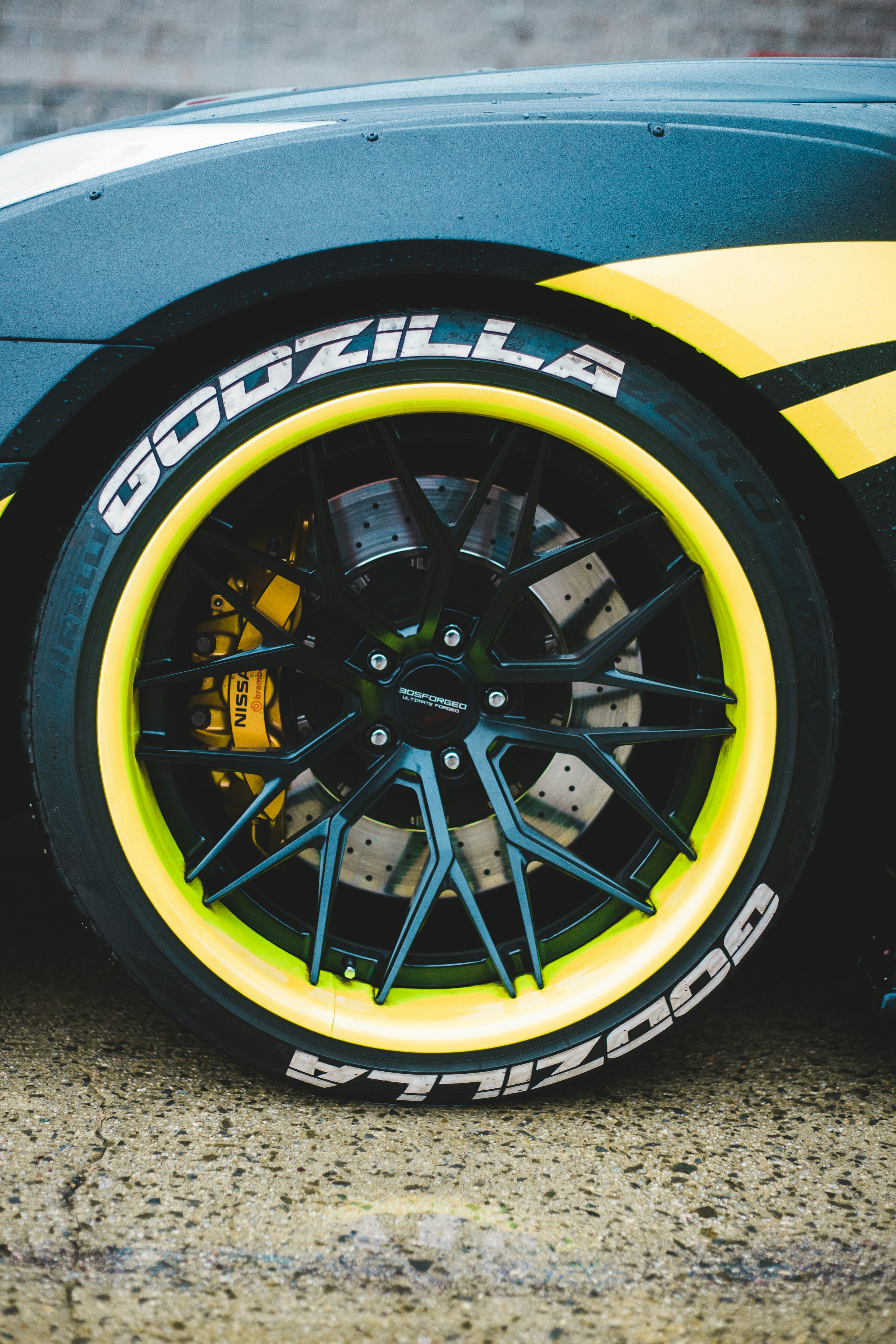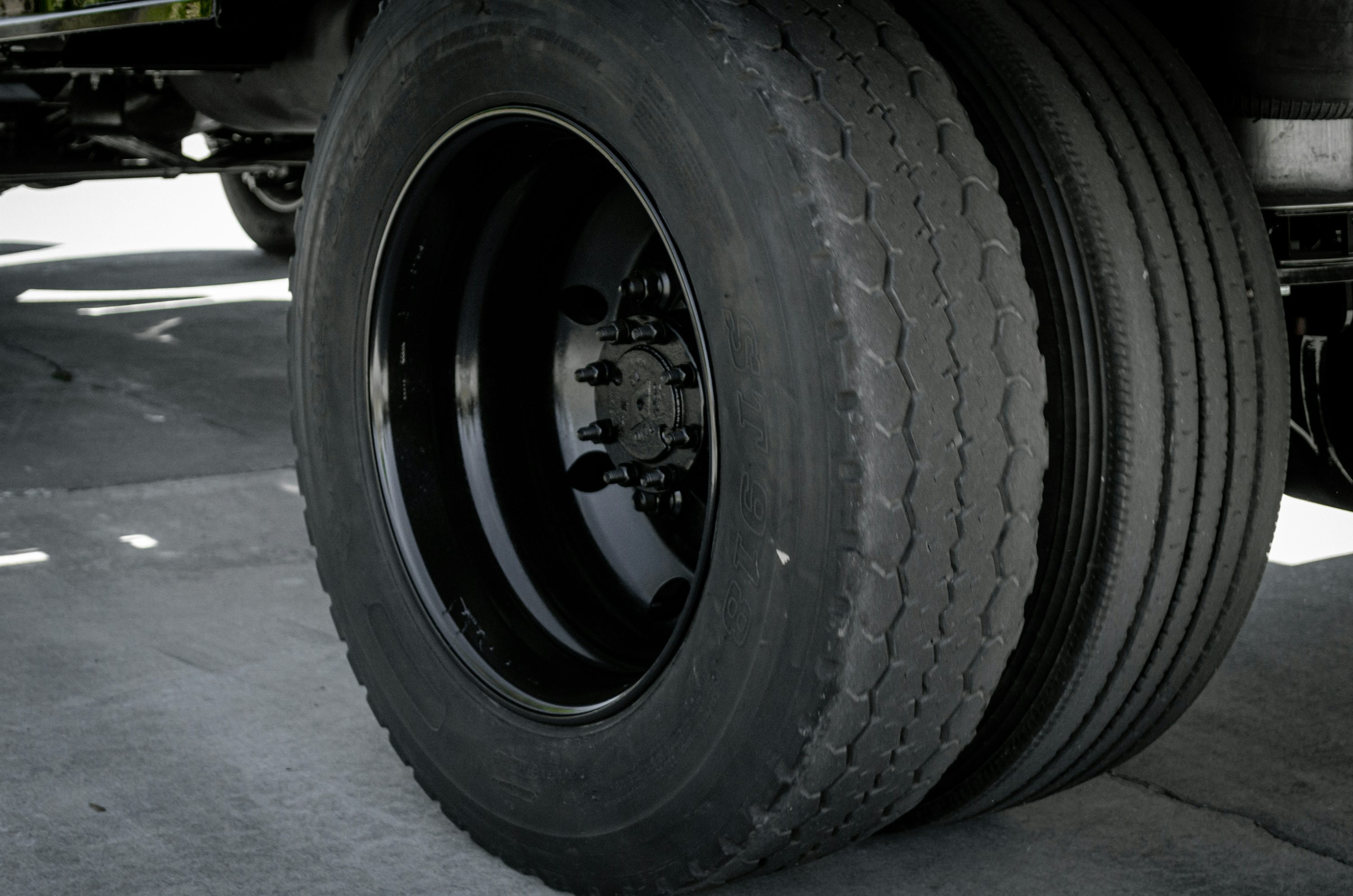- Key Differences You Need to Know
- Should You Choose 225 or 235?
- Checking Compatibility is Vital!
- FAQ
Choosing between 225 and 235 tires can change how your car drives and feels. Let's explore the key differences to help you pick the best tire size for your vehicle and driving needs.
Key Differences You Need to Know
Let's compare how 225 and 235 tire sizes feel and function on the road. Understanding these points helps you make an informed decision for your vehicle.
Driving Feel & Control
235 Tires:
Better Grip on Dry Roads: The wider 235 tires put more rubber on the ground. This means improved grip, especially during spirited driving or emergency stops on dry surfaces. You'll likely feel more connected to the road with this increased tire width.
More Stable at High Speeds: These tires can make your car feel more firm and stable, particularly when driving at highway speeds or taking sharp corners. This extra tire width provides increased stability, which contributes to a more confident handling feel.
Handle More Weight: Typically, 235 tires have a higher load index. This means they are designed to support a bit more weight. This can be important for larger vehicles or if you often carry heavy loads.
225 Tires:
Quicker Turning Feel: Narrower 225 tires can sometimes offer a slightly more nimble or quicker turning feel. Because there's less rubber to adjust when you steer, the car's steering might feel more responsive for some drivers.
Lighter for Everyday Driving: Since they are narrower and often lighter, 225 tires can contribute to a lighter overall feel during daily city driving. This might make maneuvers like parking in tight spots or navigating busy streets a bit easier.
Fuel & Running Costs
225 Tires:
Better Fuel Economy: Generally, 225 tires use a little less fuel. This is because they have less weight and lower rolling resistance. They also create less aerodynamic drag. All this means your engine works a bit less to move the car forward, potentially leading to slightly better fuel economy and savings over time.
235 Tires:
Higher Upfront Cost: Due to using more material and sometimes being designed for higher performance, 235 tires usually cost more to buy initially. Expect to pay a bit more per tire, perhaps an extra 20-50 AED/SAR, depending on the brand and specific tire.
Slightly Higher Fuel Use: The wider tire width of 235 tires means more contact with the road and more air resistance. This can result in a minor increase in fuel consumption, possibly adding a few extra AED/SAR to your fuel bill each month, especially if you drive often.
Ride & Noise
225 Tires:
Potentially Smoother Ride: With a narrower tire width, 225 tires might sometimes offer a marginally smoother ride. They can conform to small road imperfections a little better, potentially absorbing minor bumps with less harshness. This can make the ride comfort better.
Less Road Noise: A narrower tire means less tire material touching the road. This can sometimes lead to lower road noise levels inside the car compared to wider tires, making for a quieter driving experience.
235 Tires:
Can Also Be Comfortable: While wider, 235 tires can still provide a comfortable ride, depending on their sidewall height and design. The tire’s sidewall plays a big role in how well it absorbs impacts and contributes to overall ride comfort.
Noise Depends on Tread Pattern: The noise a tire makes is mainly influenced by its tread pattern design, not just its width. Some high-performance 235 tires might be noisier due to aggressive patterns. However, touring-focused 235 tires can be very quiet. Tire width is less of a factor for noise than the specific tread pattern.
Look on Your Car
235 Tires often look wider and muscular. They tend to fill the wheel arch of your car more completely. This gives your vehicle a more aggressive and sportier look, which many car owners prefer. This aesthetic difference in tire width can be a key factor for some.
Should You Choose 225 or 235?
Pick the best tire size that matches your driving style and needs:
✅ Pick 235 Tires If...
You Prioritize Handling and Dry Grip: If you want precise steering and maximum grip, especially when driving on dry roads or during spirited maneuvers, 235 tires will likely give you that extra confidence. They offer a larger contact patch for better traction and handling.
You Accept Minor Fuel Economy Changes: You understand that the wider tire width might mean a slight increase in fuel use. You are fine with this small trade-off for improved handling and grip.
Your Car Maker Recommends Them: Always follow your car manufacturer's recommendations for tire sizes. If your car was designed for 235 tires, using them ensures the best performance, safety, and warranty compliance.
You Like the Wider Look: If you prefer the aesthetic of a more aggressive vehicle with tires that visibly fill the wheel arch, then 235 tires will give your car that desired appearance and a more planted stance.
✅ Pick 225 Tires If...
Fuel Savings Matter Most: If fuel economy is a top priority, the slightly lower rolling resistance and weight of 225 tires can contribute to better gas mileage. This means fewer trips to the fuel pump and more savings over the life of the tires, which can add up significantly in regions like the Gulf.
You Drive Mostly in the City: For daily commutes, stop-and-go traffic, and city driving, where extreme grip and high-speed handling are less critical, 225 tires are often a more practical choice. Their quicker turning feel can also be helpful in tight urban spaces.
Your Car Came with 225s Originally: If 225 tires were the original tire size fitted by your car manufacturer, it’s generally best to stick with them. Your car's suspension, speedometer calibration, and overall performance were designed around this tire width.
You Prefer a Softer or Quieter Ride: If ride comfort and lower road noise levels are more important to you than ultimate grip, 225 tires can sometimes offer a smoother and quieter experience. Remember, though, that the tire's tread pattern also plays a big role in ride characteristics.
Checking Compatibility is Vital!
Never just guess your tire size! Putting the wrong size tire on your car can have serious consequences. Here's how to check and why it's important:
Look at Your Door: Check the sticker inside your driver's door frame. This sticker, often on the door jamb or inside the glove box, is your main source for correct tire sizes and pressures. It lists the exact tire width, aspect ratio, wheel diameter, load index, and speed rating recommended by your car manufacturer. Always refer to it first.
Check Your Current Tires: Look at the numbers and letters printed on the sidewall of your tires now. While this is a good secondary check, make sure these are the correct tires for your car. Tire size information (e.g., P225/55R17) is clearly visible on the sidewall. This also helps confirm the aspect ratio and rim size, which are crucial for tire compatibility.
Talk to a Tire Pro: If you are unsure or want to change tire sizes, always ask your local tire shop. Putting the wrong tire size on can lead to several problems:
Mess up your speedometer reading: If the overall tire height changes, your speedometer can become inaccurate. Your car might show you are going slower or faster than your actual speed, which can lead to traffic tickets or unsafe situations.
Cause damage to your car: Incorrect tire sizes can rub against suspension parts, fender liners, or even brake lines. This can cause serious and costly damage to your vehicle and compromise safety.
Be unsafe: Tires that are not the correct size can negatively impact your car's handling, braking, and stability. This makes your vehicle less predictable and potentially dangerous, especially in emergency maneuvers.
Void your car insurance: In some areas, using tire sizes not approved by the car manufacturer or that differ greatly from the original specifications can void your vehicle's insurance policy. Always confirm your local regulations and insurance terms to avoid unexpected issues.
FAQ
Q:How much fuel will switching to 235s cost me?
A: When considering a switch from 225 tires to 235 tires, the impact on fuel economy is usually minimal. You might see a slight increase in fuel consumption, perhaps around 1% to 3%. For instance, if you usually spend 200 AED/SAR on fuel per week, this might increase by a mere 2-6 AED/SAR. Many other factors affect fuel use more, like your personal driving style (aggressive acceleration vs. smooth driving) and daily traffic conditions. These will likely have a much larger impact than a minor tire width change. For typical city trips, the exact difference is often hard to notice.
Q:Are 235 tires safer than 225s?
A: Not simply because they are wider. Safety primarily comes from using the right tire size for your specific vehicle, ensuring the tires are in excellent condition (good tread depth, no damage), and are appropriate for the weather conditions you're driving in. Both 225 and 235 sizes are safe if they meet these criteria. Good quality tires of the car manufacturer's recommended size are always the safest option.
Q:Can I put 235 tires on rims made for 225s?
A: Maybe, but you must ask an expert first. It’s possible to fit 235 tires onto rims that originally held 225 tires, but this isn't always recommended and requires professional advice. Wheel rims have a specific width range designed to safely accommodate certain tire sizes. Attempting to mount a 235 tire onto a rim that is too narrow for its tire width can be extremely dangerous. It can lead to improper tire seating, early tire wear, or even the tire coming off the rim (de-beading) during driving. It's crucial to consult a tire professional or your local tire shop; they can quickly check wheel compatibility and ensure your safety.
Q:Will my speedometer be wrong if I change tire sizes?
A: Possibly! Changing tire sizes can definitely affect your speedometer accuracy. It's not just the tire width that matters (like 225 or 235), but more importantly, the overall tire diameter or height. Even a small change in overall tire height can cause your speedometer to read inaccurately. For example, if the 235 tire has a slightly larger overall diameter than your original 225 tire, your speedometer will read lower than your actual speed. A qualified tire shop can easily calculate the difference in tire circumference and tell you exactly how it will impact your speedometer reading. They can often provide solutions or advise if the change is acceptable.
Read More:
How Much Is the Jetour T2:Current Price Guide & Where to Find Deals
Volkswagen Tiguan Review:Your Practical Family SUV Choice for 2025
Where Is the Volkswagen Tiguan Made? Your Global Factory Guide



